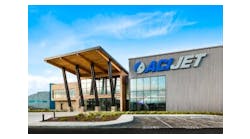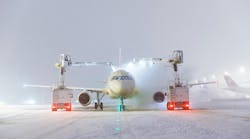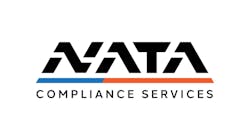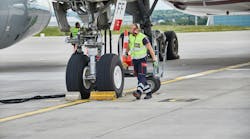Aircraft ground handling activities require an extensive wealth of technical skills, regulatory proficiency, safety and security knowledge, in addition to the service delivery elements along with interpersonal and leadership skills.
A ground handling service provider (GHSP) must ensure that training programs have a high level of appreciation of all these elements.
“At the same time, we have to ensure the induction experience for our employees is engaging and meets the ever-growing changes in learning styles adopted within teaching environments that our people are used to receiving,” says Claire Hall, people executive vice president at Menzies.
Important strategies for aircraft ground handling companies to deliver effective training include the development of training programs, the implementation of distance learning, accounting of personnel retention issues and considering the contribution of safety management to training customization.
Developing Training Programs
Developing a training program for GHSPs comes with distinctive features and challenges.
“The challenges we face start with the fact that training has to be informed by the risk assessment, which will produce a standard (and safe) way to perform the task in the form of a standard operating procedure (SOP). This then defines what needs to be included,” says Dave Rogers, head of global training at Swissport.
“One should also consider the fact that many operators have different procedures and this then drives complexity within training, for example, teaching the most basic thing – i.e., where cones shall be positioned at the aircraft – will need to cover each operator configuration and then explain to the employee why it is different depending not on the aircraft type but of the livery of the aircraft, even with same aircraft model,” he continues. “This requirement for operators to have operational procedures comes from ICAO requirements for commercial air transport and so cascades the challenge into the classroom.”
It is indeed a challenge for GHSPs to develop a training program that airline customers will accept in place of their own.
“We have had very little across-the-board success with this. In most of our stations, we serve multiple customers and our business model is to cross-utilize all team members for all contracts,” says Tom Hubbard, director of field training and education at Airport Terminal Services (ATS). “Having to complete full training for each customer makes it confusing and overwhelming for our team members. Our training program meets IATA/ISAGO standards. Even then, the airlines expect full training of their own programs.”
Another challenge has to do with the fact that GHSPs are dealing with adult education and not all employees are graduates, so there is a requirement to ensure the training is engaging and informative.
“There is little point in the greatest piece of knowledge being included in training if the participants are not engaged. Learning just will not be effective. We have to be able to deliver and enable learning according to the culture of the nation and that of the participants. For instance, in some countries, we find employees really enjoy coming to class for the opportunity to learn together and genuinely discuss topics,” says Rogers. “We have to accommodate all learning styles and ensure the training materials are suitably differentiated to include both visual, auditory and kinaesthetic activities. All of this then needs to have the learning outcomes assessed to recognize if competency has been achieved and everything needs to be documented and tracked for recurrent requirements.”
Despite the challenges, aircraft ground handling training programs also provide success opportunities – such as developing trainers and helping them grow and become a true part of the operational team.
“The challenge here is that many people who enter the world of training often develop to a point where they are able to move forward in their career into leadership positions. However, this is indeed a positive point,” says Rogers.
At dnata, new joiners undertake a mix of classroom- and practical-based training, depending on what their roles are. The classroom element consists of general induction information, along with a series of mandatory safety and security modules to ensure they can operate safely and confidently on the ramp.
“For the practical elements, they receive hands on training for the role(s) they are expected to perform on the ramp. This is delivered by experienced and qualified trainers who ensure the new personnel are fully competent in their new roles,” says Steve Clark, head of global training for dnata. “The initial training program for new hires usually takes approximately two weeks and the participants are then operational. As they progress onto other roles on the ramp, they undertake more training accordingly. This training is obviously dependant on the new role they are doing but can last between two days and two weeks”.
Menzies’ training programs have individual distinctive features.
“These can be a challenge to govern and to ensure that we provide a consistent standard throughout each individual program. We have a global organizational learning and development team that sets the basic standard induction programs and governance processes. Our goal is to provide industry leading training and development to our employees, that keep them safe and motivated, and provides them and us with a platform to grow,” says Hall. “In addition, our technical and regulatory training requirements are annually reviewed against the IATA AHM standards, our regulators and our customer requirements, this is to ensure we are always in line with the industry standards and risk management.”
Distance Learning Solutions
Distance learning solutions have become mainstream in recent years as a means for GHSPs to communicate the overarching standards, requirements and training content. ATS uses a learning management system (LMS) to track, record and administer training.
“We do still require instructor-led training as well, but our LMS has enabled a consistent and uniform message to be delivered and tracked. We take advantage of new course authoring software programs that enable interactivity, the use of videos and knowledge checks as well,” says Hubbard.
Menzies make use of multimedia networking platforms to communicate its training programs and ensure that all trainers have the correct tools to do their job and have a platform where they can share ideas, issues and relevant information.
“Although our locations are vast and there can be many varieties of requirements across each location or airport, we handle similar customers. This means this sharing platform can allow us to support our customers’ agendas on a global level. We also utilize LMS to host digital learning content that is standardized for all locations. Our learning management platforms allow our management and our customers to have better transparency on training records and gives us a much more resilient record keeping process,” says Hall.
When compared to other industries, however, Rogers believes that eLearning is still growing in the aircraft ground handling market.
“Perhaps the reason GHSPs are lagging could be attributed to some of the challenges inherent to the business and, of course, there is the complexity that some authorities may or may not allow certain topics to be delivered by eLearning. We also find that employees really value interaction with a trainer as a subject matter expert to allow for questioning and deeper understanding to be checked,” he points out.
Personnel Retention Issues
High turnover is a challenge in the aircraft ground handling sector, therefore training must be designed and administered to address this particular challenge.
“A high turnover rate may be influenced by poor training where the employee does not feel confident or is not competent to perform their assigned duties, a well-trained and confident employee may be less likely to seek other employment,” says Swissport’s Rogers. “However, it would be wrong to purely say training effectiveness is directly related to staff turnover rates as there are many socio-economical and socio-political reasons which may impact staff retention rates.”
The key for a GHSP training program is to engage and enable learning for the participant in an informative, effective and efficient manner.
“Ensuring this approach can only help support employee retention and make it more likely the participant is to stay in the company. It is the ‘Goldilocks’ zone: not too much training on topics the person will not be engaged in, not too little training that the person feels less than confident or may indeed not be competent. Just the right training, to the right person, at the right time, in the right way,” says Rogers.
Menzies focuses on the reviews from employees that have left the business to update induction processes, as well as the after care and management of the employees when they have completed their training.
“We adopt a blended learning approach to our inductions, to ensure they have a mixture of classroom-based learning, digital learning, multimedia and practical training. We also recognize that the theoretical element of their induction journey makes up only 10 percent of their learning, so we work with our HR and operational management to ensure we have a supportive environment and development path for our employees, once they are in their day to day environments,” says Hall.
“We also have many people across the business who started their career in ground handling and have successfully moved up and across leadership roles in the organization,” she adds. “It is, therefore, critically important to invest in the development of our people – not only to give them the skills to do their job today, but to give them the skills to build their career with us.”
Training is subject to ongoing review at dnata to ensure it keeps pace with the operational and business demands.
“As improvements are made within our operating procedures or as our customer requirements change, these must be rapidly reflected within the training system to ensure continued alignment,” says Clark. “We are constantly working to improve the effectiveness of the training programs, moving more to point-of-need training and competence based assessment, along with establishing more consistent coaching and mentoring for our new hires.”
Hubbard of ATS points out that a learning experience oriented at employee retentions should not end with training.
“After our team members complete training, they are paired with a ‘mentor.’ Observations are conducted and follow-up surveys have begun to help improve our training and rate the level of comprehension of the training,” he says.
The SMS Contribution
As a consequence of safety management system (SMS) implementation, training programs for GHSPs are being increasingly fed by SMS.
“We operate under a SSMS (safety and security management system). The auditing, risk assessments and quality assurance part of it all ties in and has an impact on how training is delivered and what needs to be added,” says Hubbard.
“Safety is integrated within all of our training programs. However, our approach to safety is not limited just to training. It is embedded throughout all of our operational and management systems. All of our personnel, supervisors and leaders are regularly updated on the safety initiatives in place across dnata as well as their responsibilities within the overarching safety systems,” says Clark. “In terms of our safety programs, we are always working to improve their effectiveness. Key initiatives include the introduction of a STOP observation program and more widespread incident management training for all levels of our leadership and management teams.
“Over the past years we’ve also introduced an Incident Investigators training program which covers dnata’s operations worldwide. This will continue to develop as we mature and grow.”
At Menzies, safety management systems and technical services underpin everything that is provided in regards to training content.
“Although operational learning sits within the people sector of our business, our training is created against our ground handling manuals and SMS and this theme is consistent across all locations. The contributions that our SMS provides is a standardized approach to how all employees manage safety and security within our locations,” says Hall. “Our managers will manage safety in a consistent way from the top down and bottom up. This gives us the insight and guidance we need to consistently manage the risks within the business, through our training.”





